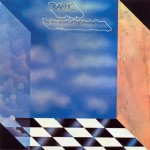To a certain extent, Traffic reflected the the interband traffic that went on in British rock music in the late ’60s and early ’70s. Formed in 1967 by guitarist Dave Mason, drummer Jim Capaldi, woodwind player Chris Wood and you-name-it-he-can-play-it Steve Winwood, the band would see Mason come and go over the next few years and totally disband in 1969 as Winwood joined up with Eric Clapton in Blind Faith. But the group reassembled and, sans Mason, in November 1971 released The Low Spark of High Heeled Boys. The album, my favorite by the band, went gold on February 7, 1972.
 Opinions are split on whether Traffic was better with or without Mason. Notably, though, he wasn’t part of Low Spark or John Barleycorn Must Die, the first Traffic LP to go gold. There’s also no doubt the title track to Low Spark is probably one of the most heard Traffic songs today. That it has become a signature tune may alone speak to its quality.
Opinions are split on whether Traffic was better with or without Mason. Notably, though, he wasn’t part of Low Spark or John Barleycorn Must Die, the first Traffic LP to go gold. There’s also no doubt the title track to Low Spark is probably one of the most heard Traffic songs today. That it has become a signature tune may alone speak to its quality.
With Low Spark, Traffic moved into somewhat jazzier territory. That change is seen from the opening cut. “Hidden Treasure” is a mellow, laid back tune featuring Wood on flute. It’s a good transition from the sound on the band’s prior, largely acoustic album, John Barleycorn Must Die. The 12 minute long title cut follows, expanding on the band’s tendency to embark on lengthy jams. The song quietly fades in with a piano riff that forms the basis for a slow-building jazz-tinged feel. The song meanders through its changes (some say too much and in too unfocused a fashion) before slowly fading away just as it faded in. But the combination of Winwood’s keyboard work and Wood’s sax make this a highly worthy tune.
Most of Winwood’s songs have the feel of “Hidden Treasure.” Although his electric guitar solos and riffs create more of a rock feel, “Many a Mile to Freedom” also has that laid back sense, one reinforced again by Wood’s flute. Similarly, the closing track, “Rainmaker” is reminiscent of the opening cut, opening with the flute up front, quiet guitar work and folk-like vocals but ending with funky jazz feel and a Winwood guitar solo.
This doesn’t mean there’s no rock on the album. Two songs sung by Capaldi, “Light Up or Leave Me Alone” and “Rock and Roll Stew,” are the hardest rockers. For some reason, though, the CD issues change the order of the songs. On the LP, “Light Up or Leave Me Alone” closed the first side whereas on CD “Rock and Roll Stew” follows the title cut. Thus, “Light Up or Leave Me Alone,” which opens with a guitar riff by Winwood, has a harder edge to his guitar work and closes with a nice guitar solo, was originally the first introduction to the rock feel of Low Spark.
Low Spark, which actually reached number seven on the sales charts in the U.S., also highlights another of the things lost in the era of CDs. When the LP was released, the upper right hand corner and lower left hand corner of the album cover were gone, creating a rhombus and the look of a cube. That made it distinct from every other LP in your collection. The rhombus, though, disappeared on later LP reissues and CD inserts in favor of a standard square. Thus, the only thing that makes the CDs distinct from others in your collection is the content.
If you had just a minute to breathe
And they granted you one final wish
Would you ask for something, like another chance
Title Track, Traffic, The Low Spark of High Heeled Boys







